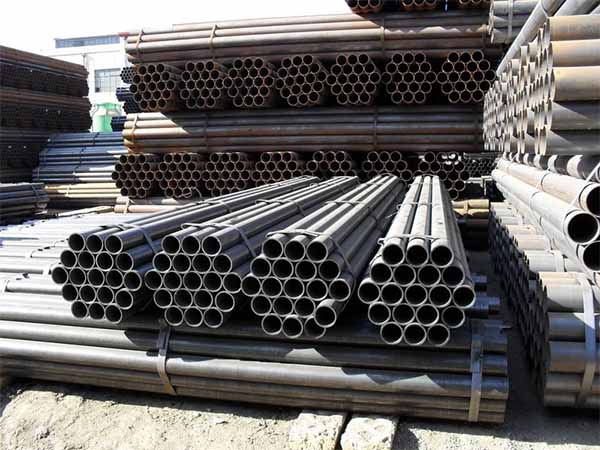ERW pipes are steel pipes that melt the edges of steel strips through resistance heating and then apply pressure to form weld seams. EFW pipes are made by melting the base material and filler metal through high temperatures generated by electric arcs or electron beams and then welding them together, which belongs to fusion welding. Although their names are similar, they have significant differences in manufacturing processes, welding methods, applicable materials and application fields.

What is ERW steel pipe?
ERW steel pipe is a welded pipe made by heating the edge of the steel strip to a plastic state through resistance heat and then welding it under pressure. This welding method does not require welding wire or filler metal and belongs to solid-phase welding. The weld seam is smooth, with high strength and high production efficiency.
Main features
The weld seam is smooth and has high dimensional accuracy
Suitable for carbon steel and low alloy steel
It has a relatively low cost and is suitable for mass production
The heat-affected zone of welding is small and the mechanical properties are stable
Common standards include: ASTM A53, API 5L, ASTM A252, EN 10219.
It is mainly applied in fields such as oil and gas transmission pipelines (medium and low pressure), structural steel pipes, scaffolding pipes, mechanical manufacturing and automotive parts.
What is EFW steel pipe?
EFW steel pipes are made by melting and welding the base material and welding wire together using an electric arc or an arc plus filler metal fusion welding method. EFW is typically used for welding thick-walled tubes made of stainless steel, nickel alloys and carbon steel. The weld seam is wide, with a large penetration depth and strong corrosion resistance, making it suitable for high-temperature and high-pressure environments.
Main features
The filler metal is used, and the weld seam is completely penetrated
Suitable for large-diameter and thick-walled pipes
It has excellent corrosion resistance and high-temperature strength
Each tube needs to undergo X-ray or RT inspection
Common standards include: ASTM A312, ASTM A358, ASTM A671, and ASTM A672.
It is mainly applied in fields such as chemical equipment, petrochemical plants, boiler and power plant pipeline systems, nuclear power, Marine engineering, and high-temperature and high-pressure fluid transportation.
How to choose the right welded steel pipe?
If the project requires medium and low pressure fluid transportation or structural pipes, ERW steel pipes should be selected: they have high production efficiency, beautiful welds and low cost.
If it is used in high-temperature, high-pressure or corrosive medium environments (such as in the chemical, energy, Marine and other fields), EFW steel pipes should be selected: they have high weld quality, strong corrosion resistance and higher reliability.
Choosing the appropriate type of steel pipe can not only enhance the safety of the project but also effectively reduce long-term maintenance costs.
